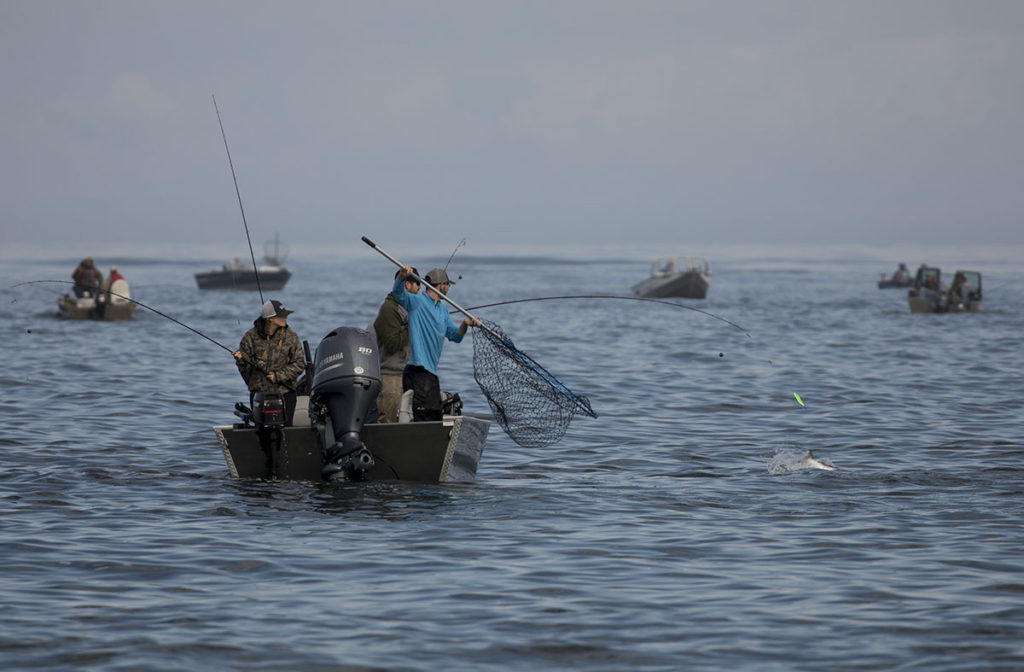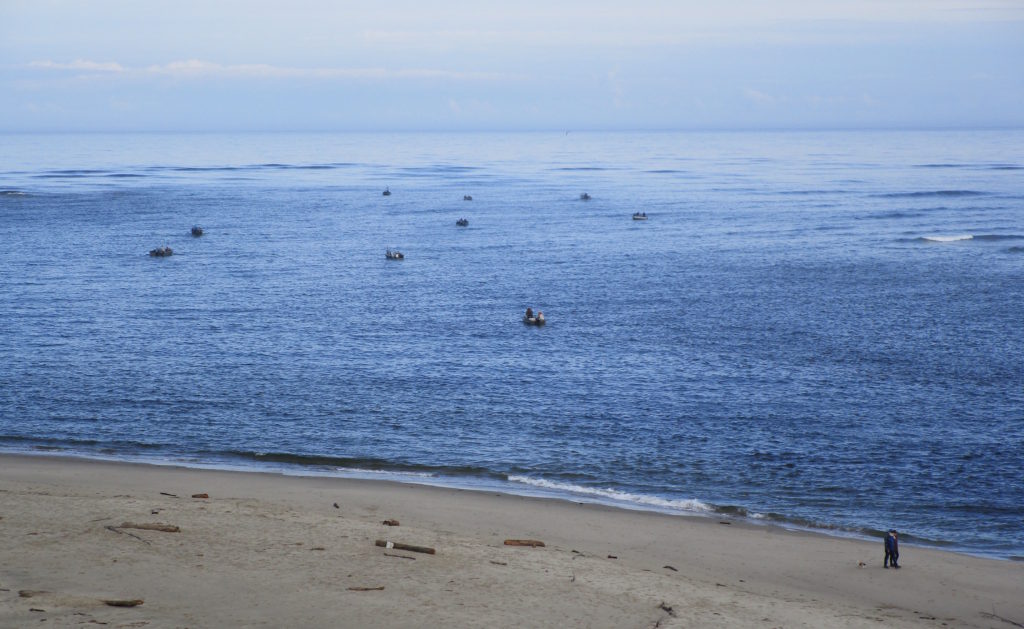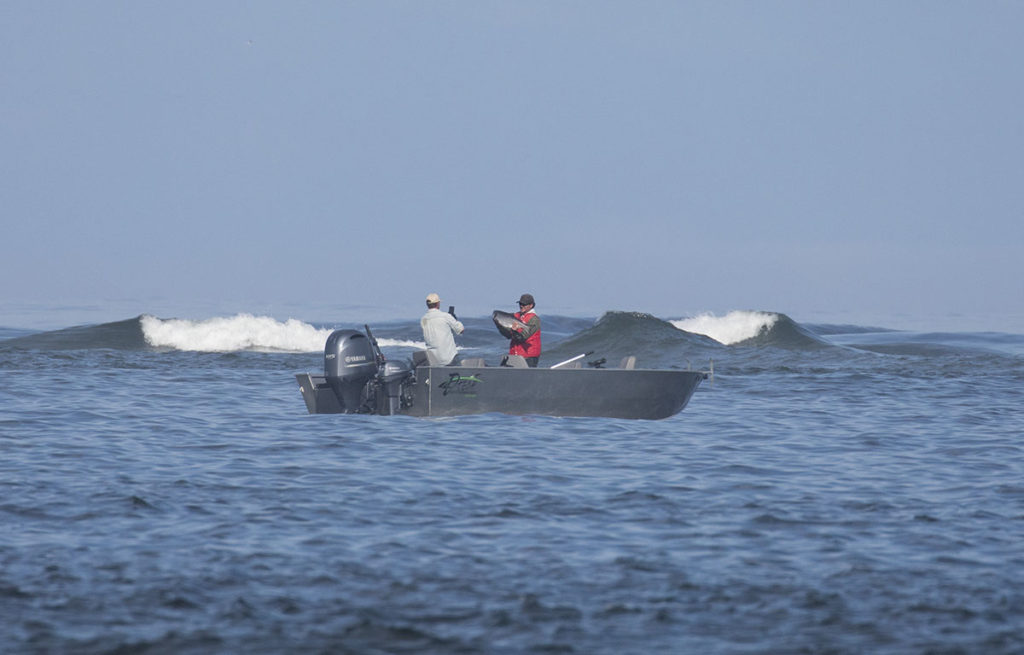
By QUINTON SMITH/YachatsNews.com
There will be more fishing than catching of salmon this season on coastal streams in Lincoln County.
Salmon returns – both Chinook and coho – should be better than last year. But runs are still depressed because of years of poor ocean conditions that are now only starting to improve.
Low salmon returns last fall and the forecast for a repeat of that – and a new way of estimating fish returns – has resulted in a dramatic cutback of catch limits for fall Chinook. The Oregon Department of Fish & Wildlife has instituted a 5-fish season bag limit on major streams from the Siletz River in the north to the Siuslaw in the south.
On the Yachats River, where Chinook fishing at the mouth ranges from about 100 to 275 landings a year, the season limit is just two fish. Chinook fishing is closed in Tenmile and Big creeks south of Yachats.

Previous bag limits for fall Chinook were two fish per day and 20 for the season. The last time ODFW restricted fall Chinook catches to this degree was in 2008-09, said John Spangler, the agency’s regional biologist in Newport.
“This is definitely not unheard of … but it’s the first time under the new coastal management plan,” Spangler said. “We hope this is sufficient to not have to make any more changes this year.
“We’re now reaping the results of poor ocean conditions with poor returns,” he said. “We’ve been in this downturn but it may be that we’re beginning to pull out of it.”
Spangler said fishermen sometimes link ocean fishing for Chinook – which is good right now – with how runs will be in coastal streams. But the Chinook runs are different, he said. Chinook being caught now in the ocean are headed north to the Columbia River or south to the Klamath and Sacramento rivers.
Chinook headed up coastal rivers originate in water off Alaska and Canada, where feeding conditions have been poor but improving.
Still, Spangler said, “It appears we could be climbing out of the trough” of low returns.
The keeping of any mid-coast wild coho salmon, which is listed as threatened under the federal Endangered Species Act, is once again prohibited.

And, there was the massive spike in catch in the fall of 2015, when fishermen reported landing more than 10,000 Chinook salmon on the Alsea – two to three times the normal catch.
“Everybody remembers 2015 when everybody caught fish,” Spangler said.
The other problem came last November when ODFW halted upriver fishing because extremely low, warm water forced migrating Chinook to pool up near tidewater waiting for rain. Spangler said both the Siletz and Alsea rivers are running low “but if we get some good rains in October we should be OK.”
Spangler said the forecast is for 75,000 wild coho to return to mid-coast streams, not enough to trigger a limited fishery in some river basins. It would take a coho run estimate of at least 100,000 to even begin thinking of opening some fishing, he said.
“People see a group (of coho) and think there’s a lot … but when you get them spread out over a whole basin, there’s really not so much,” he said.
There are no large coho hatchery programs on the central coast, Spangler said. Fishermen will occasionally catch some adipose-clipped coho – they are legal to keep – but they are strays heading to north coast rivers straying into local rivers chasing bait.
“I think it’s going to be a really frustrating year for coho,” he said. “There’s going to be a fair number of coho released.”



